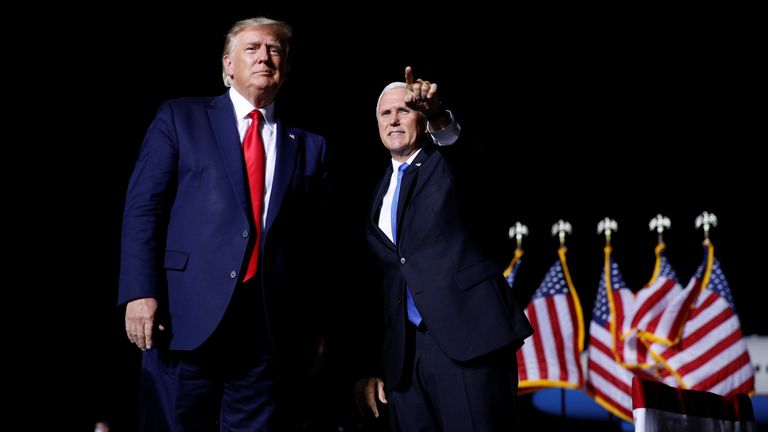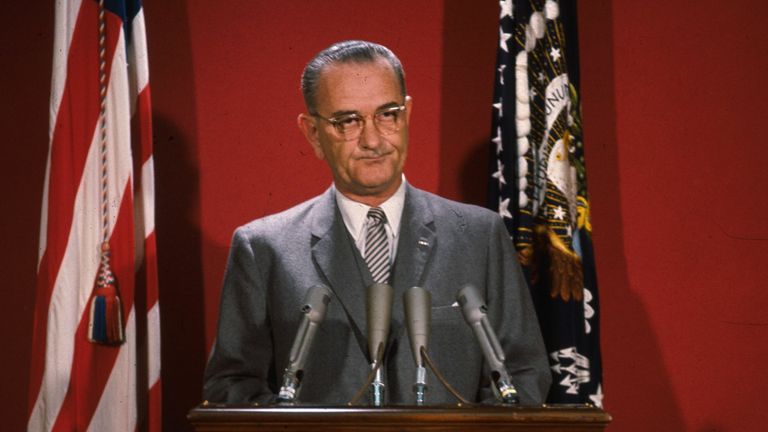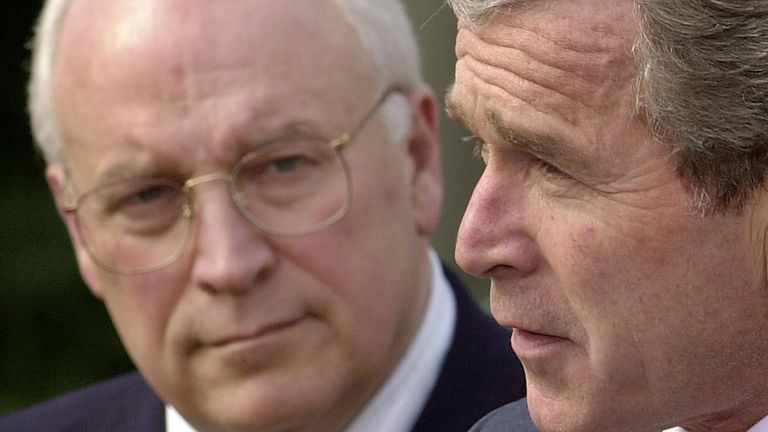Donald Trump is said to be doing well as he is treated in hospital for coronavirus – but what happens if his condition worsens and he becomes seriously ill?
The 25th Amendment of the US Constitution can be invoked whenever a president is, for any reason, unable to carry out their duties, including being incapacitated.
Under the amendment, power could be transferred to the Vice President Mike Pence temporarily or more permanently.
Mr Trump has not invoked it and the White House says he will be working from an office at the Walter Reed hospital in Maryland.
Latest coronavirus updates from UK and around the world
How does the 25th amendment work?
A president who knows he is or will be unable to perform the duties of the office notifies Congress, and the vice president becomes the acting president.
That arrangement continues until the president sends another notice to declare that he is once again able to do the job. That is spelled out in section three of the amendment.
The next section of the amendment, section four, has never been invoked. This lays out what happens if the president becomes unable to discharge his duties but does not transfer power.
In that case, the vice president and majority of the cabinet can declare the president unfit.
They would then send a letter to the House speaker and president pro tempore – the second-highest ranking official in the Senate – saying so. The vice president then becomes acting president.
If the president ultimately becomes ready to resume his duties, the president can send a letter saying this. But if the vice president and majority of the Cabinet disagree they can send a letter to Congress within four days. Congress would then have to vote.
The president resumes his duties unless both houses of Congress agree by a two-thirds majority to say he is not ready.
What happens if the president and vice president both become incapacitated?
First in line to serve as the acting president is the House speaker, now Nancy Pelosi, followed by the president pro tempore of the Senate, who is now Chuck Grassley of Iowa, followed by members of the cabinet.
But Ms Pelosi or Mr Grassley might be reluctant to accept the role, because they would be required to resign from Congress in order to take the position and could serve only until Congress finally decided who the president will be.
Why was the amendment introduced in the first place?
It was brought in following the assassination of President John F Kennedy in 1963.
His successor Lyndon Johnson promised in 1965 to propose laws ensuring there was a continuation of leadership should a president become disabled or die.
It addressed the Kennedy situation by saying that whenever a president dies or resigns, the vice president becomes president.
Congress passed the amendment later that year and it was ratified in 1967.
Has it been invoked before?
Yes. Presidents have temporarily relinquished power but not all invoked the 25th amendment.
Previous transfers of power have generally been brief and happened when the president was undergoing a medical procedure.
In 2002, President George W Bush became the first to use section three to temporarily transfer power to Vice President Dick Cheney while Mr Bush was given a general anaesthetic when he had a colonoscopy.
President Bush also temporarily transferred power again in 2007 to undergo another colonoscopy.
In 1985, President Reagan temporarily transferred power to Vice President George H W Bush while undergoing surgery to remove a polyp from his colon.
But he said at the time he was not formally invoking the 25th amendment.
Also, the amendment was not invoked after President Reagan was shot in 1981.
White House senior staff members discussed the measure, but Vice President Bush was travelling at the time. When he returned to Washington, the president’s condition had stabilised, and doctors anticipated a full recovery.



